Creating a tiered garden is an excellent way to maximize space, enhance aesthetics, and introduce visual interest to any outdoor area. From sloped hillside designs to compact balcony solutions, tiered gardens can be tailored to suit various environments and plant types. Whether you prefer structured retaining walls, playful stacked planters, or elegant stone terraces, each idea offers unique benefits—improved drainage, easier access, or simply a stunning focal point. Below are 20 tiered garden concepts, each described in detail to help you choose and implement the perfect multi-level planting scheme for your home.
1. Terrace Garden
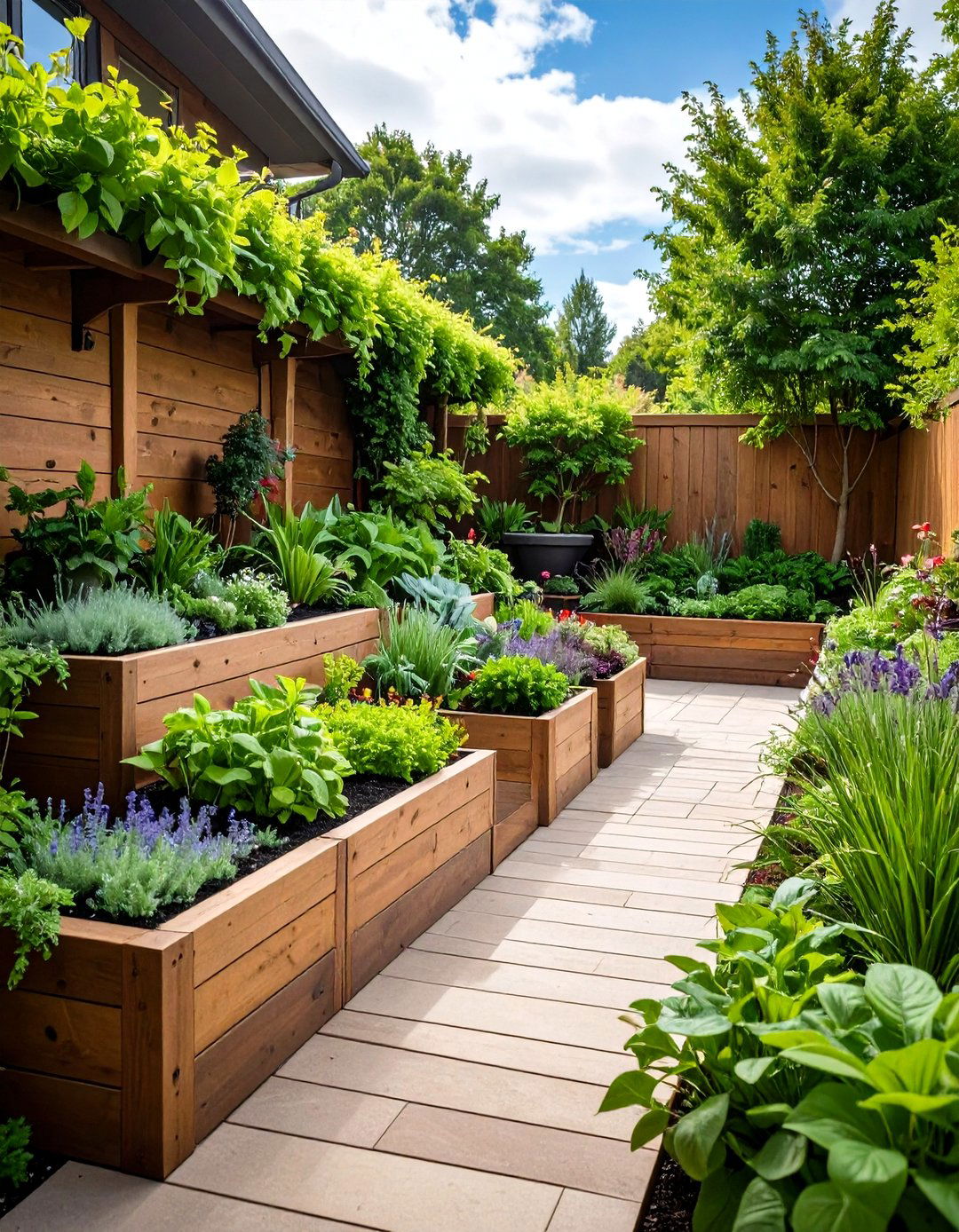
A terrace garden transforms a flat or gently sloping space into a series of raised levels, often using retaining walls or built-up soil beds. This approach creates distinct planting zones and can support heavy containers or raised beds on each level, making maintenance and harvesting easier. Ideal for urban rooftops or backyard slopes, terrace gardens balance functionality with style by incorporating durable materials like concrete blocks, timber sleepers, or stone veneer. Key elements include sturdy edging, adequate drainage, and drip irrigation to ensure even moisture distribution across all tiers.
2. Rock-Tiered Garden
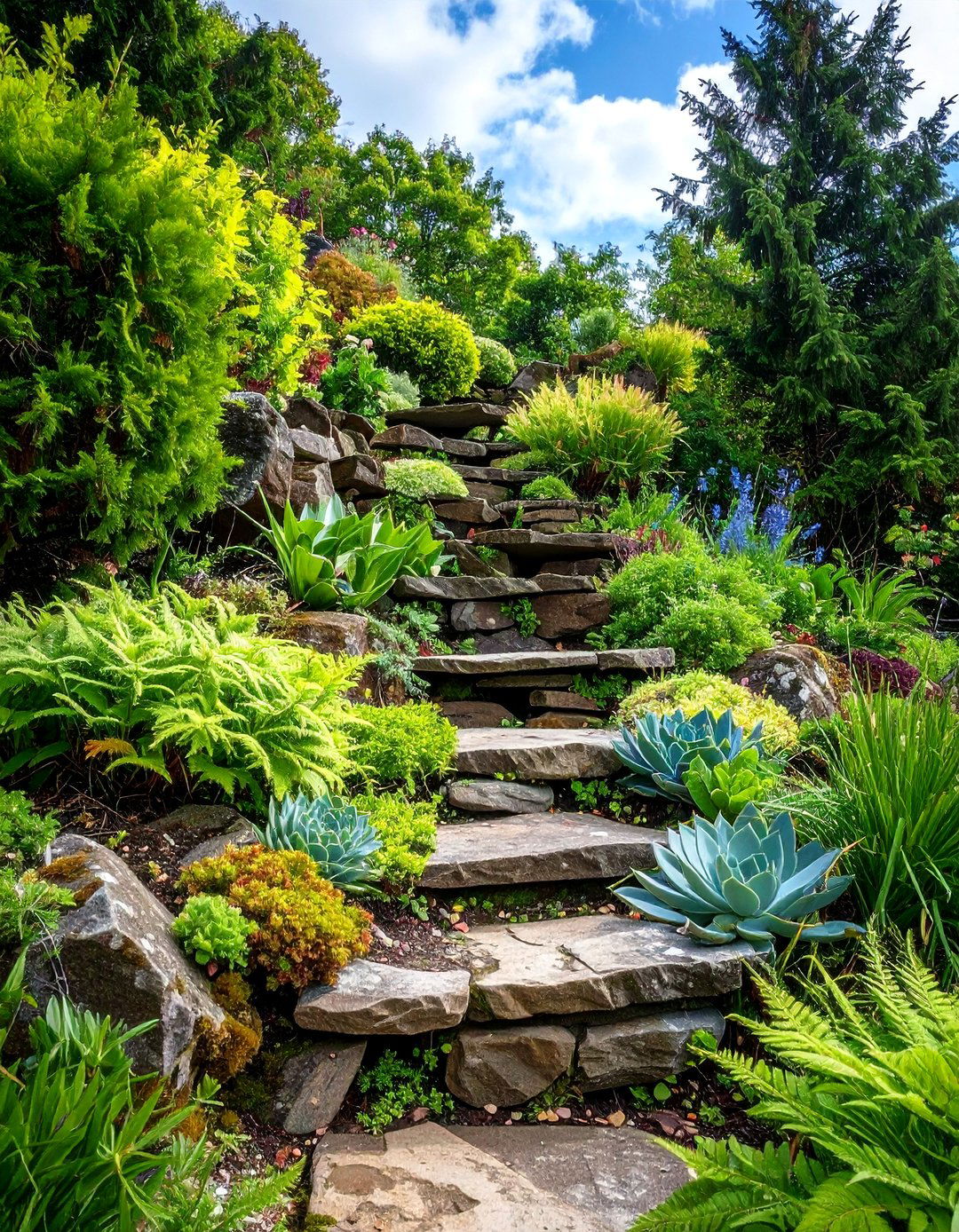
Integrating natural stone into tiered beds not only anchors your garden in the landscape but also provides excellent thermal mass to moderate soil temperatures. Rock-tiers can be built from fieldstone, flagstone, or stacked boulders, creating gentle slopes or dramatic cliff-like faces. The irregular shapes of stones allow planting pockets ideal for alpine plants, succulents, and trailing groundcovers. Proper mortarless assembly ensures water permeability while maintaining stability. Rock-tiered gardens excel on hillsides where erosion control is needed, offering both practical and aesthetic benefits.
3. Raised Bed Tiers
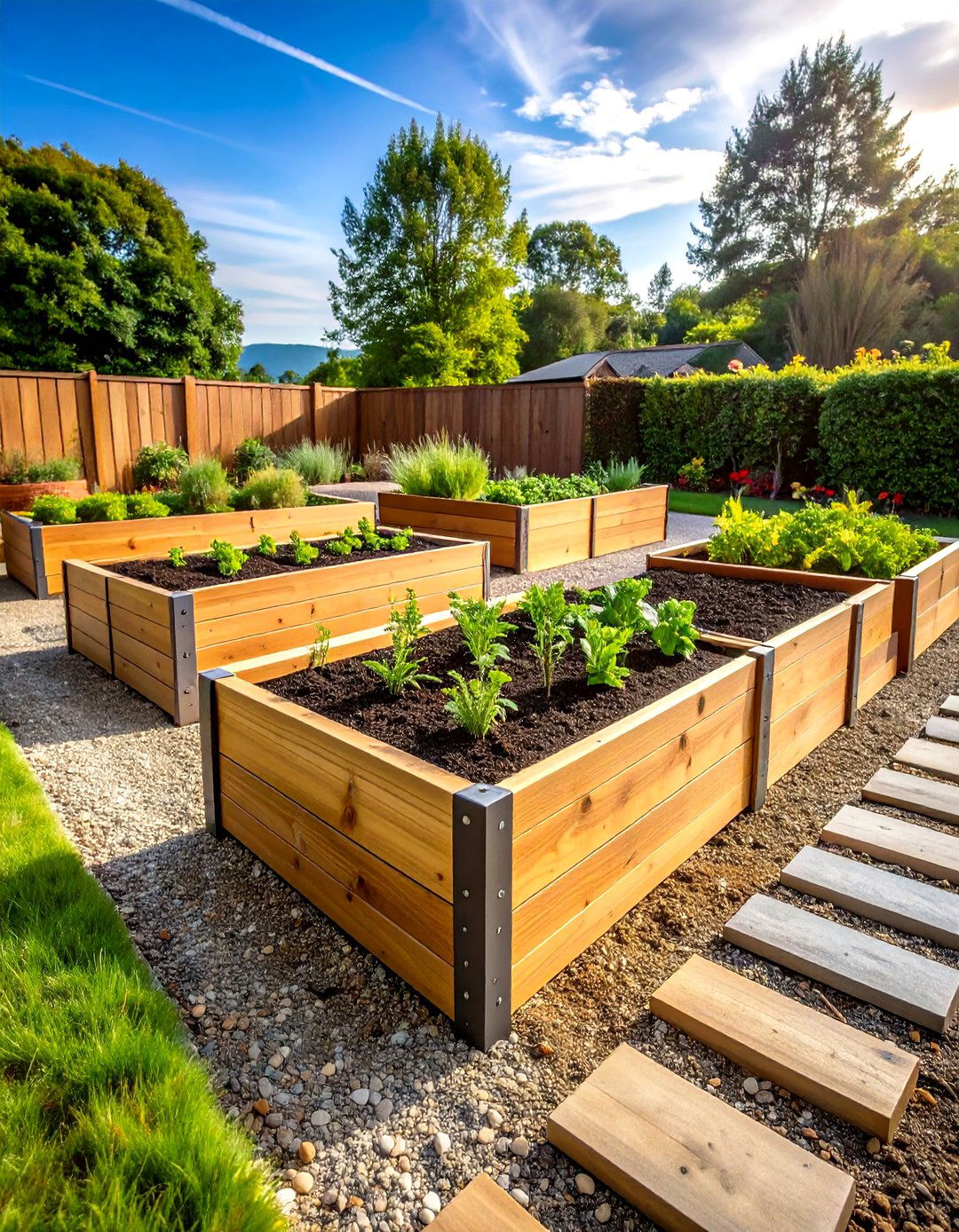
Raised beds arranged in descending tiers optimize planting height and ease of access. Commonly built from rot-resistant wood, galvanized steel, or polystone, these beds can be modular, allowing you to expand or reconfigure as needed. Each tier offers different soil mixes tailored for specific crops—deeper beds for root vegetables and shallower ones for herbs or lettuce. The height variation creates visual rhythm and simplifies planting, weeding, and harvesting, reducing strain on the back. Connecting paths or stepping stones between levels enhance flow and accessibility.
4. Succulent Tiered Display
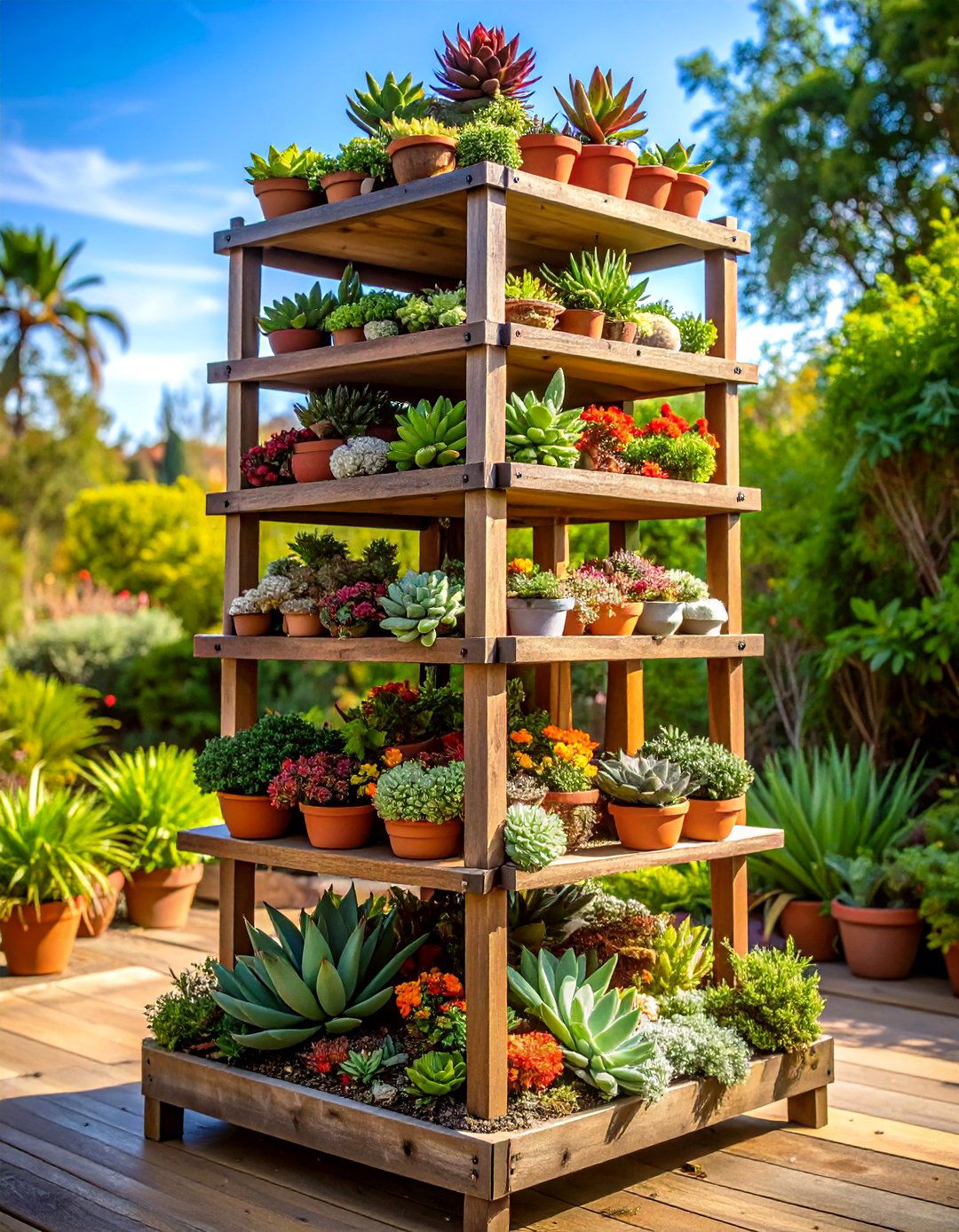
Succulents thrive in tiered gardens due to their low water needs and varied textures. Creating multi-level succulent displays involves stacking shallow, tiered containers or arranging plants on stepped shelves. Use porous pots and gritty soil to ensure drainage, and position tiers to maximize sun exposure for each variety. This design works indoors or outdoors, on patios or rock walls. Incorporate cascading sedums at lower levels and upright echeverias above, crafting a living sculpture that changes with each season.
5. Woodland Slope Tiers
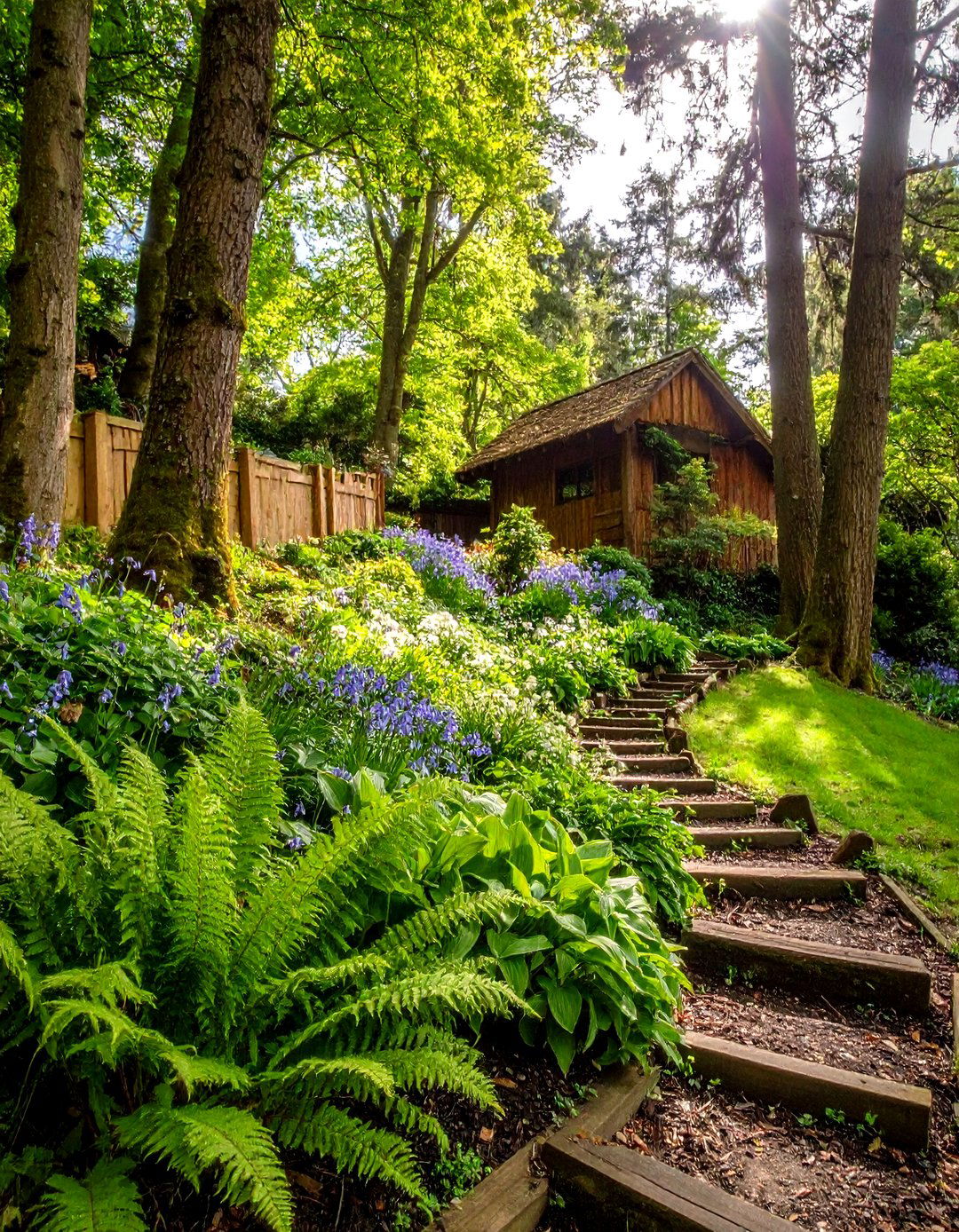
For shaded or semi-shaded areas, tiered woodland gardens employ gentle slopes with naturalistic plantings. Construct low timber retaining walls or stone steps to form tiers, then fill with woodland soil enriched with leaf mold. Underplant each level with ferns, hostas, heucheras, and spring ephemerals, mimicking a forest floor. The tiered layout improves drainage on slopes and reduces soil erosion, while layered canopy trees provide dappled shade. This setting creates a lush, tranquil retreat and supports biodiversity by offering varied microhabitats.
6. Edible Kitchen Garden Tiers
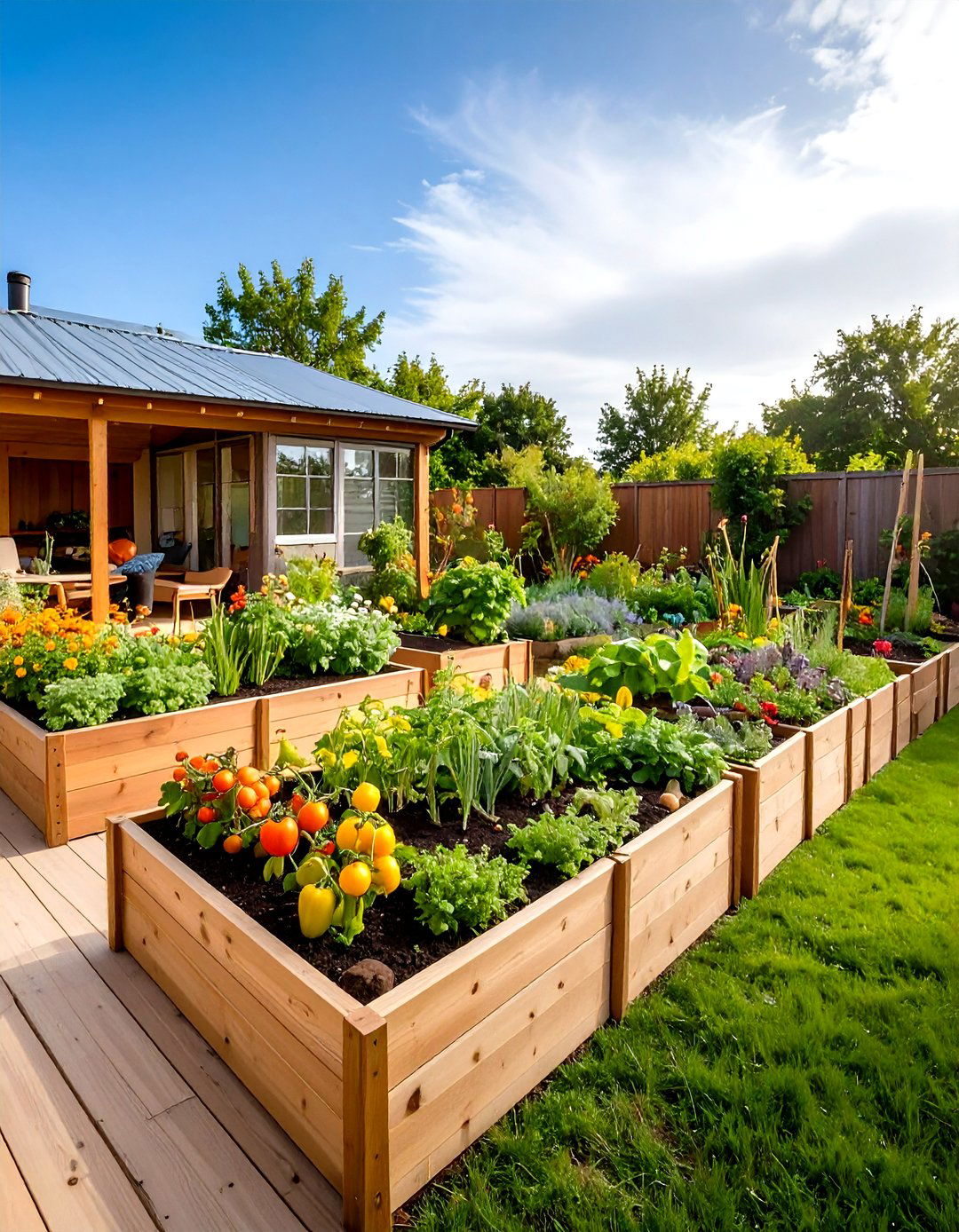
Tiered edible gardens blend functionality with charm, using stacked raised beds or container towers to grow vegetables and herbs. Place taller crops—like tomatoes and peppers—on upper tiers for sun exposure, and quick-harvest greens on lower levels. Incorporate companion planting by mixing culinary herbs around vegetable roots to maximize space. Container systems with integrated drip irrigation simplify watering, while removable tiers allow rotation between seasons. This style is perfect for small yards or patios where horizontal space is limited.
7. Balcony Multi-Level Planters
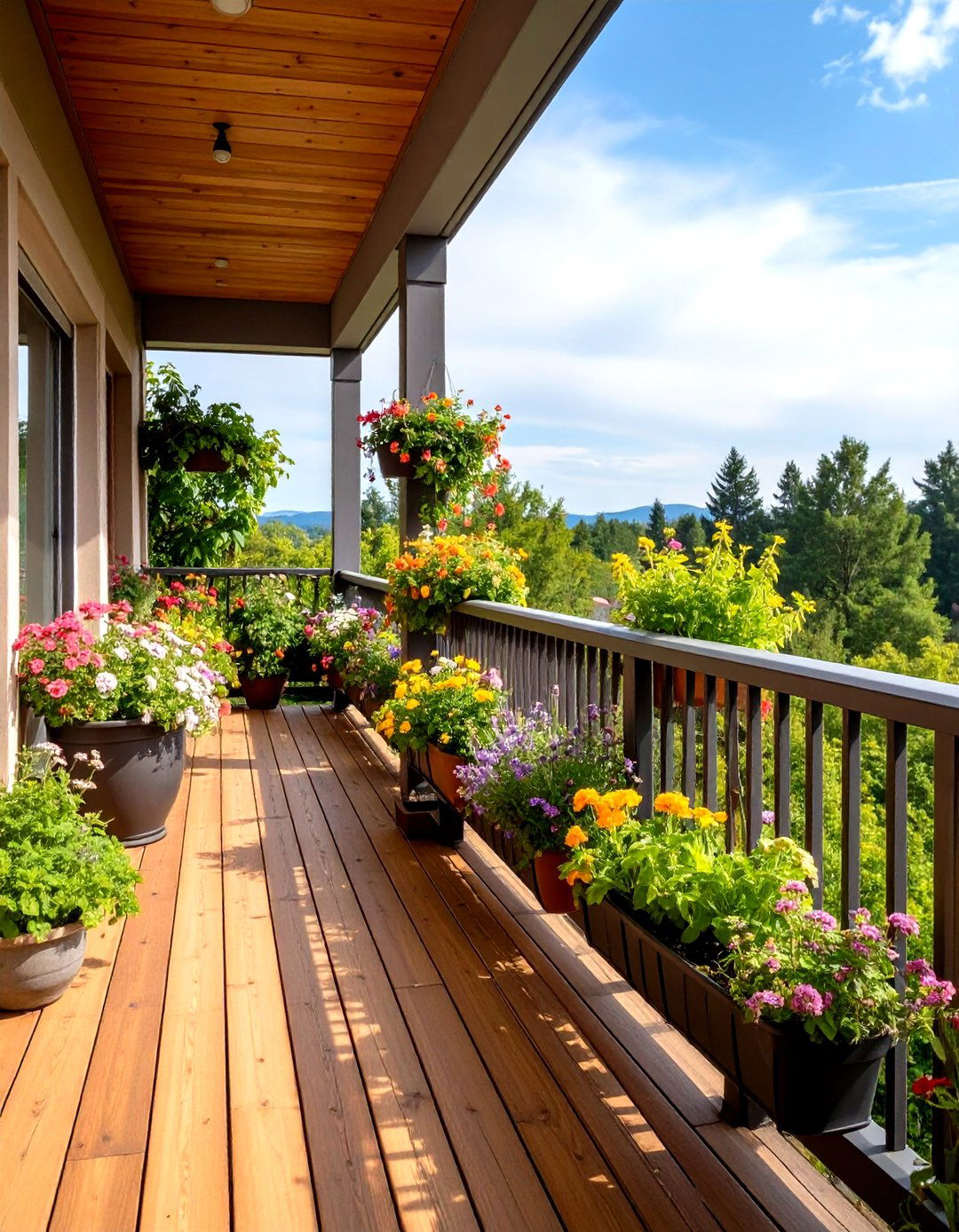
Compact balconies can host tiered planters chained or bolted to railings, walls, or freestanding stands. Vertical plant stands with adjustable shelves allow you to rearrange pots based on plant size or light requirements. Use lightweight materials like aluminum or reinforced plastic to avoid overloading structures. Integrate hanging herb baskets at higher levels and trailing ornamentals below. This setup maximizes greenery without sacrificing floor space, turning urban balconies into verdant escapes.
8. Container Cluster Tiers
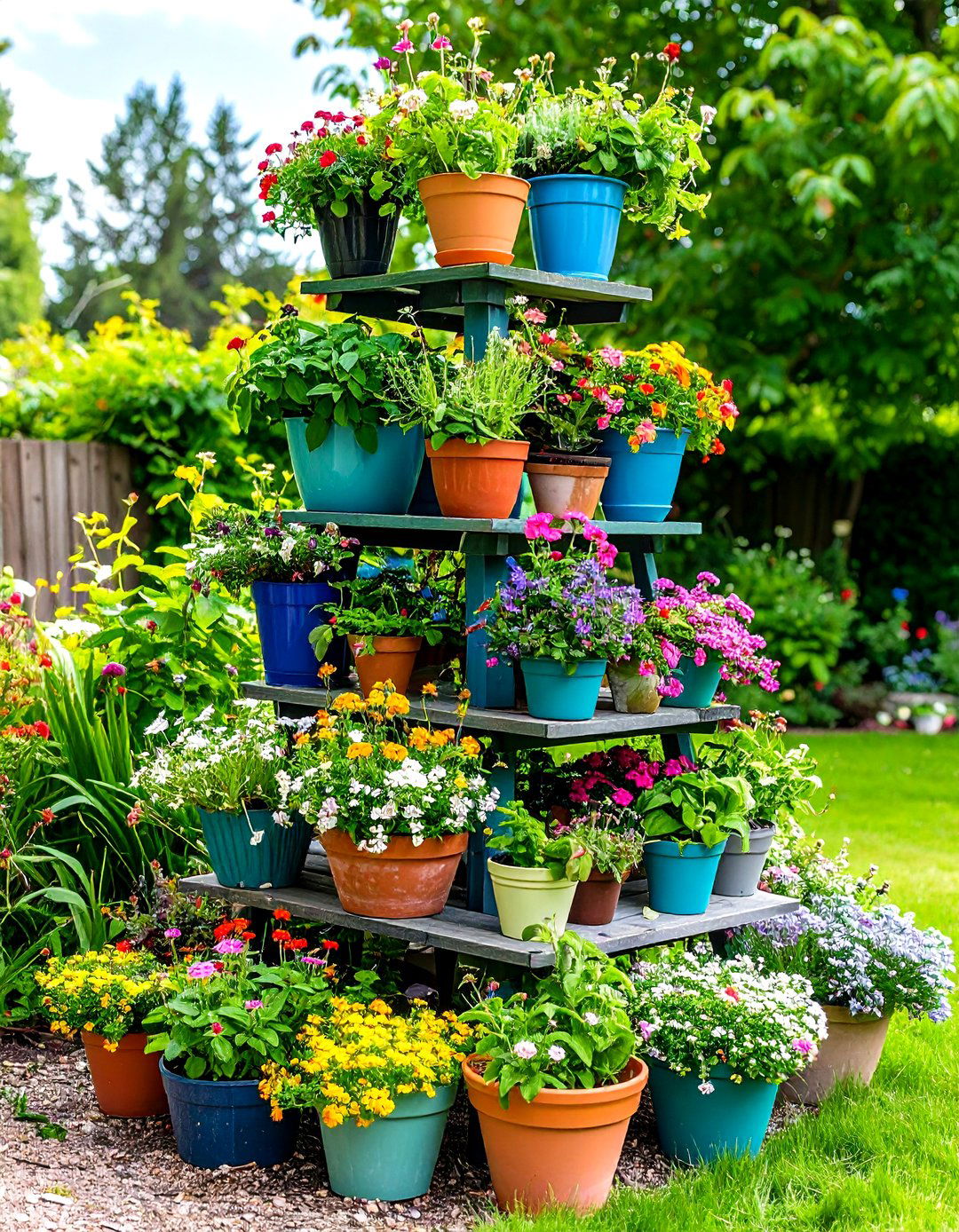
Group containers of varying heights on patio corners or near pathways to form informal tiered groupings. Use plant stands, stools, or stacked bricks under pots to create multi-level compositions. Combine large floor pots at the back with medium urns and small cachepots in front, ensuring each plant receives adequate light. This flexible design allows seasonal swapping of containers, easy relocation, and experimentation with color palettes.
9. Pallet and Crate Tiers

Upcycling wooden pallets or fruit crates into tiered planters provides a budget-friendly garden structure. Secure pallets vertically as shelving units, fill the slats with soil, and plant shallow-rooted flowers or herbs. Alternatively, stack crates in pyramidal formations, anchoring them for stability, then line with landscaping fabric to hold soil. This DIY approach suits rustic or industrial-themed gardens and encourages creative reuse of materials.
10. Natural Stone Steps
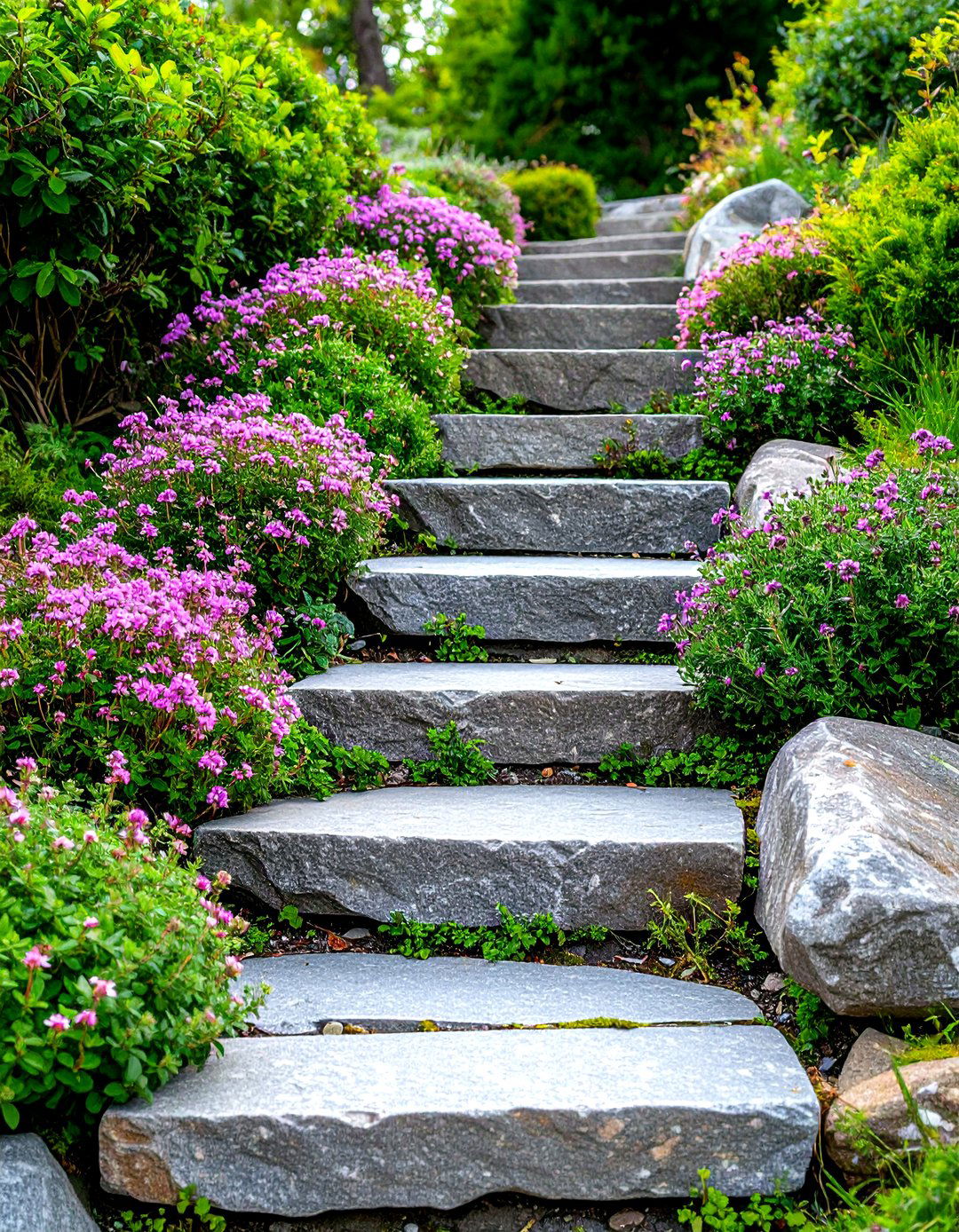
Crafting stone steps that double as planter pockets merges functionality with charm. Lay flagstones or irregular rocks to form a staircase up a slope, filling gaps between stones with lean soil and drought-tolerant plants like thyme, sedum, or dianthus. The result is a living staircase that softens the hardscape and provides each plant its own level. This enduring design enhances steep gardens and creates a whimsical, cottage-garden feel.
11. Staircase Planter Walls
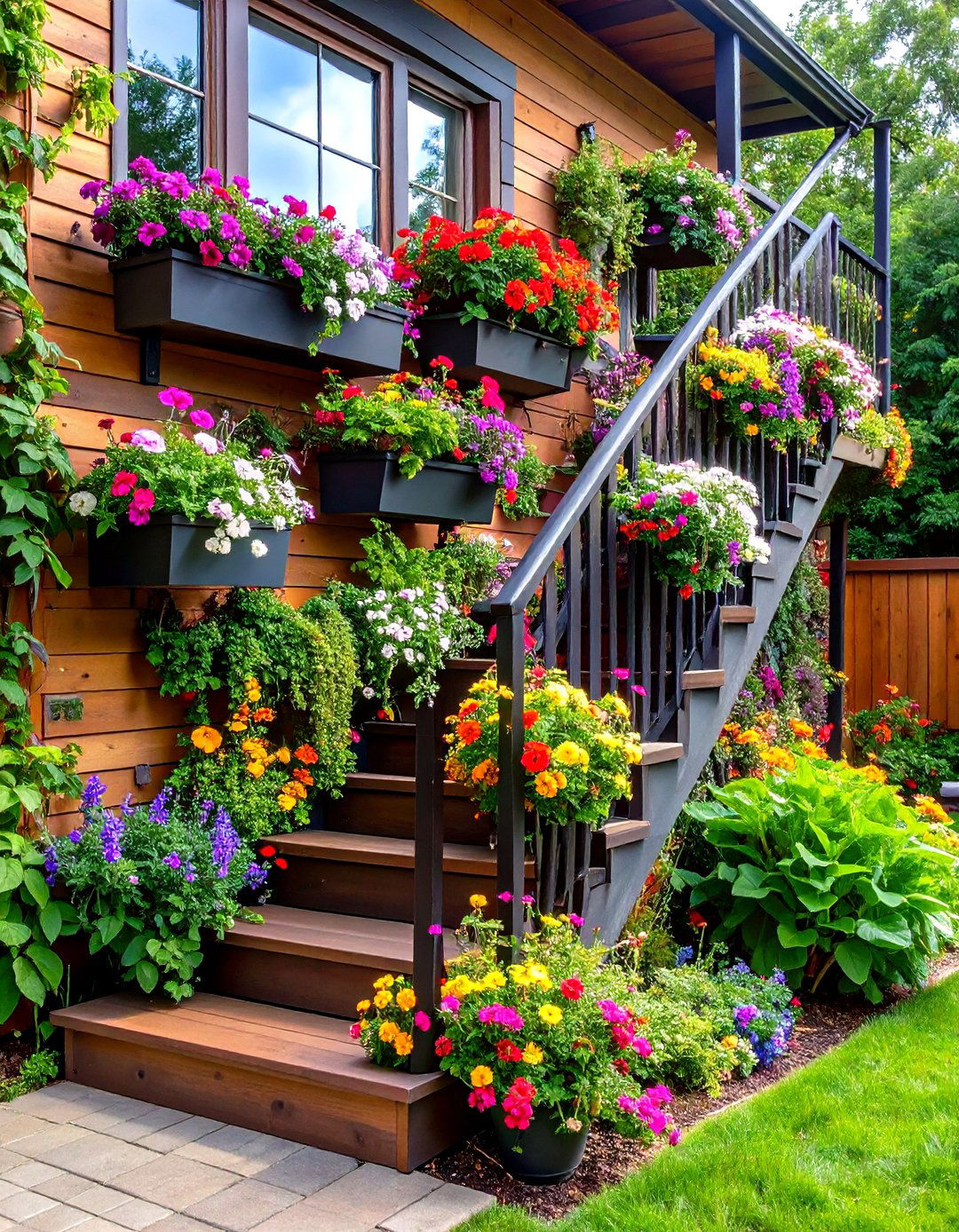
Convert a garden staircase into a tiered planter by attaching troughs or long window boxes to each riser. Choose lightweight, durable materials to avoid overloading the stairs. Fill planters with trailing vines, early-flowering bulbs, or cascading petunias for continuous visual impact. This seamless integration of hardscape and planting transforms each step into a blooming spectacle, perfect for entrances or backyard transitions.
12. Retaining Wall Herb Garden
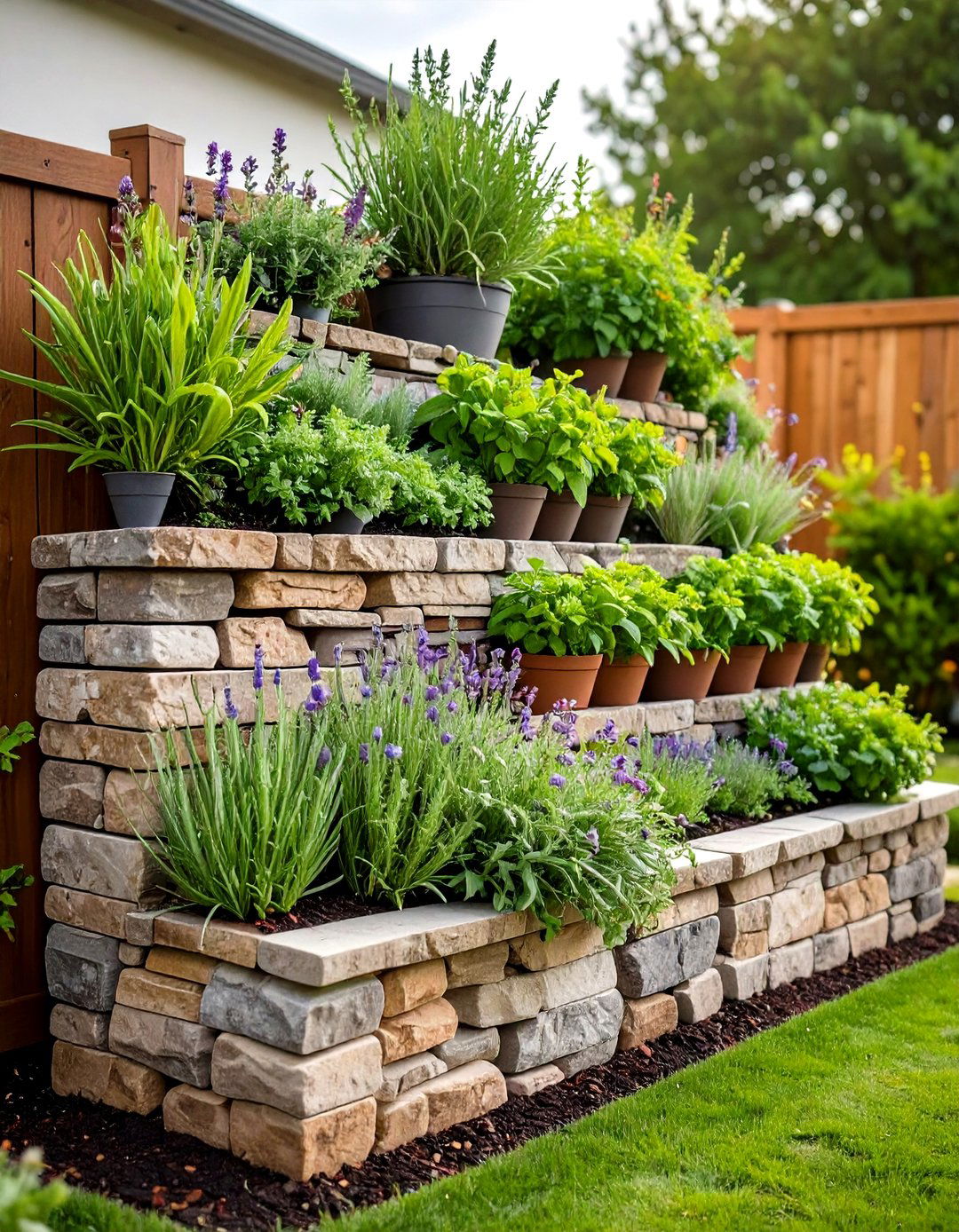
Use low retaining walls—built from natural stone or interlocking blocks—as raised herb planters. Each wall offers a tier, allowing you to group herbs by water needs or harvest frequency. Taller herbs like rosemary and sage occupy rear tiers, while low-growing thyme and chives fill front niches. The thermal mass of the wall moderates soil temperature, extending the growing season.
13. Herb Spiral Tier
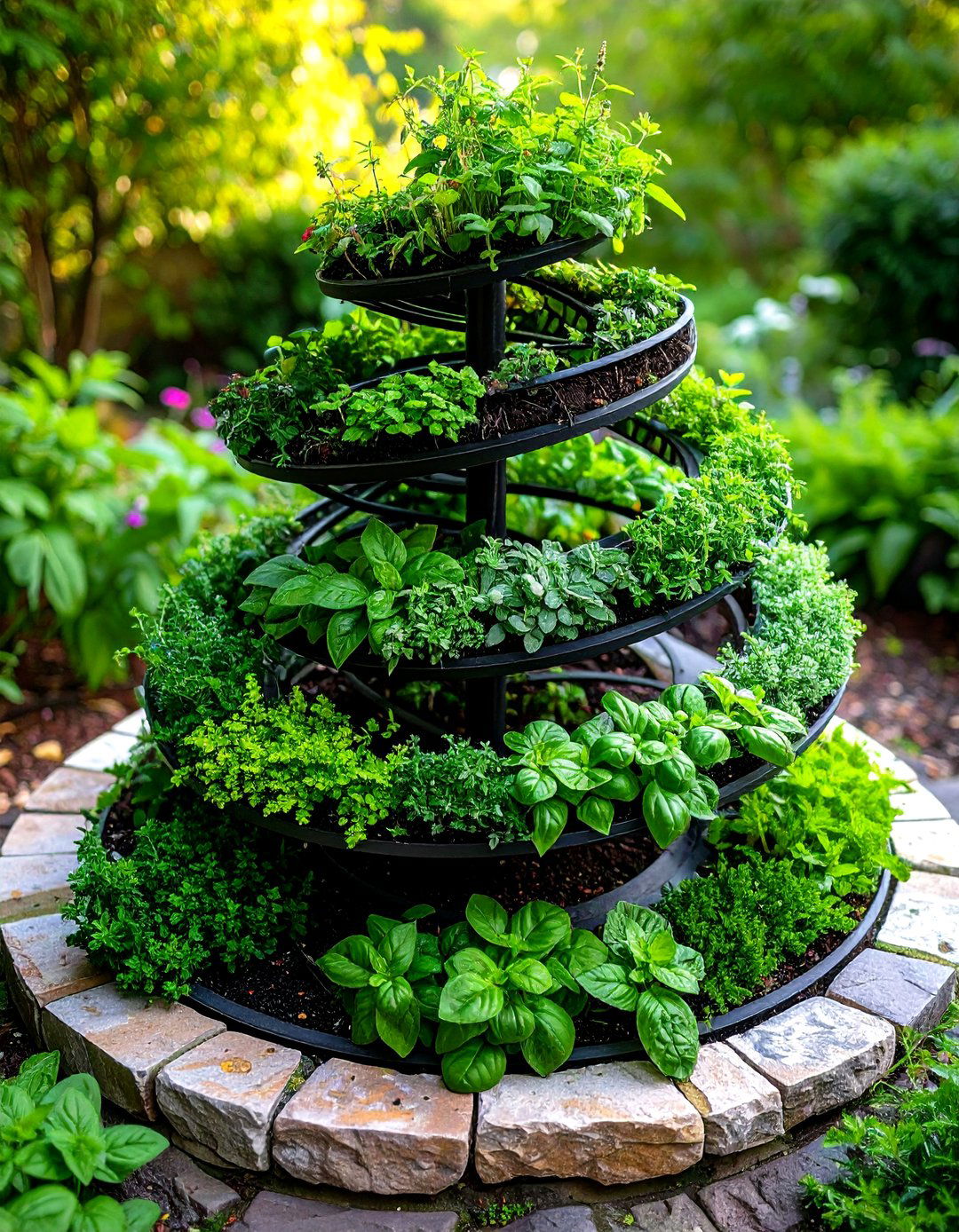
An herb spiral is a vertical, spiraling bed that creates multiple microclimates from top to bottom. Starting with a central pillar of stones or bricks, soil is layered around it in a spiral, forming raised tiers. At the highest point, plant drought-tolerant species like oregano; mid-spiral suits Mediterranean herbs like basil; the base holds moisture-loving parsley and mint. This design maximizes diversity and efficient space usage.
14. Industrial Tabletop Succulent Tower
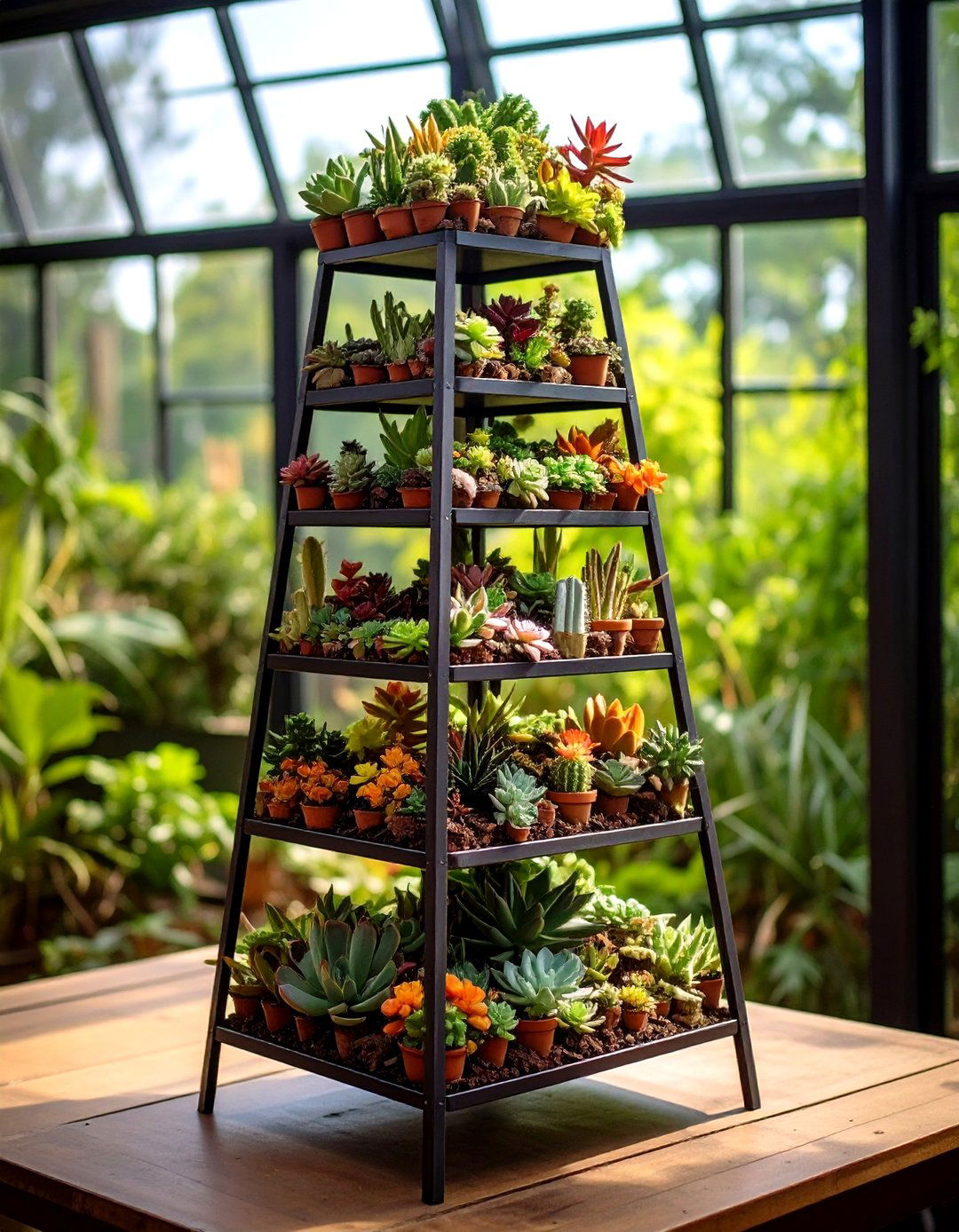
A tiered tabletop succulent tower uses stacked metal or wooden trays to display small succulents and cacti. Each level offers different textures and colors, while compact footprints make them ideal for patio tables or window sills. Use quick-draining soil and position the tower where each tier receives adequate light. This portable arrangement is perfect for seasonal rotation or indoor sunrooms.
15. Stacked Crate Vegetable Beds
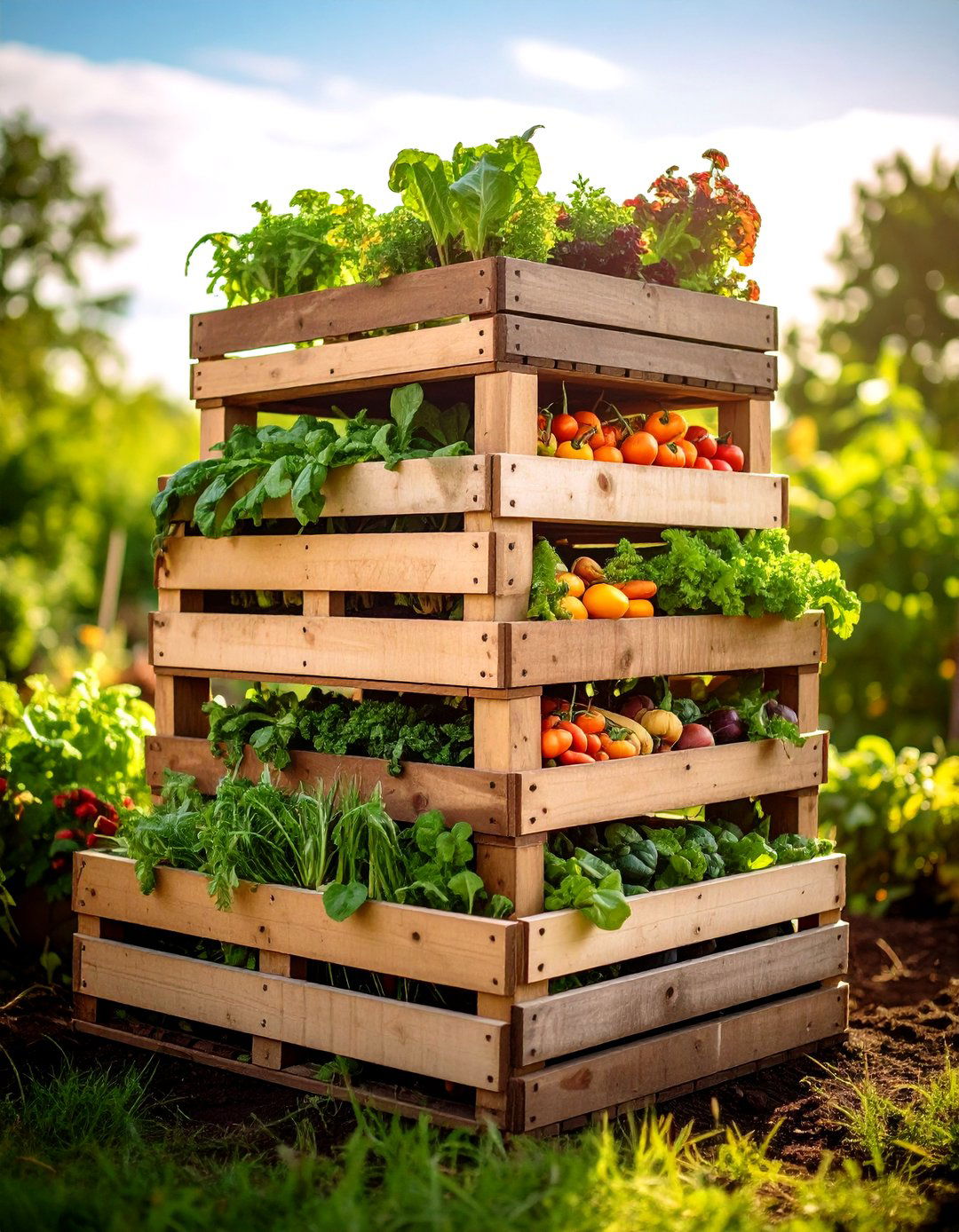
Stack wooden produce crates in tiers to support a small vegetable garden. Line each crate with landscaping fabric, fill with potting mix, and plant seasonally appropriate crops. The breathable sides promote root aeration, and the tiered configuration eases harvesting. When season ends, dismantle or repurpose crates for storage or compost bins.
16. Vertical Pallet Garden

Mount a treated wooden pallet vertically against a wall or fence, fill the bottom slats with soil, and work upward. Plant leafy greens and delicate flowers in lower pockets, and sturdier succulents or herbs higher up. This reclaimed pallet solution is both eco-friendly and space-saving, perfect for narrow alleyways or small yards.
17. Wildflower Meadow Terraces
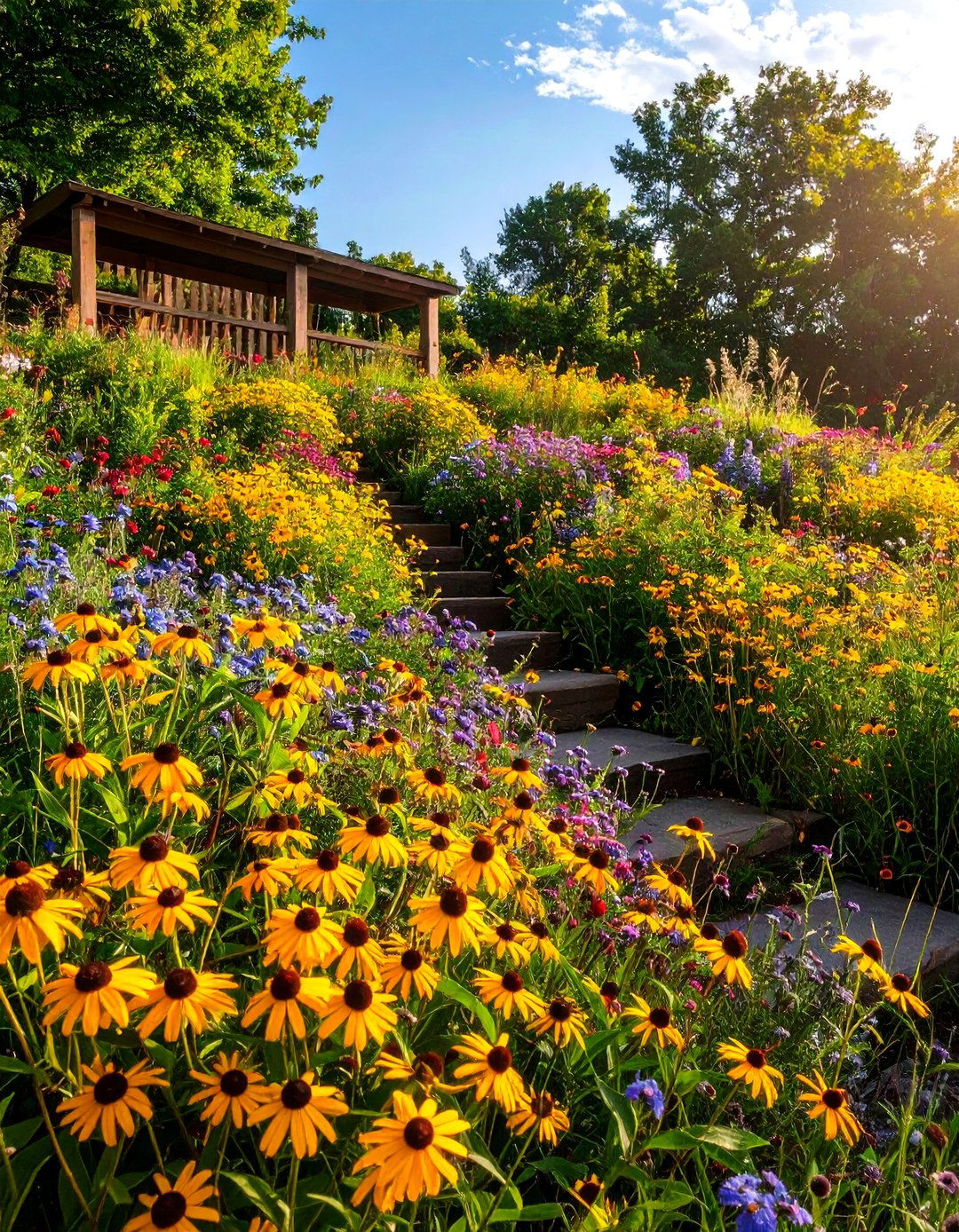
On larger slopes, create wide terraced levels seeded with native wildflowers and grasses. Each flat tier supports a diverse mix of blooms—cone flowers, black-eyed Susans, and asters—attracting pollinators and providing seasonal color. The step-like arrangement slows runoff, reducing erosion while creating a naturalistic, conservation-minded garden.
18. Forest Edge Multi-Level Beds
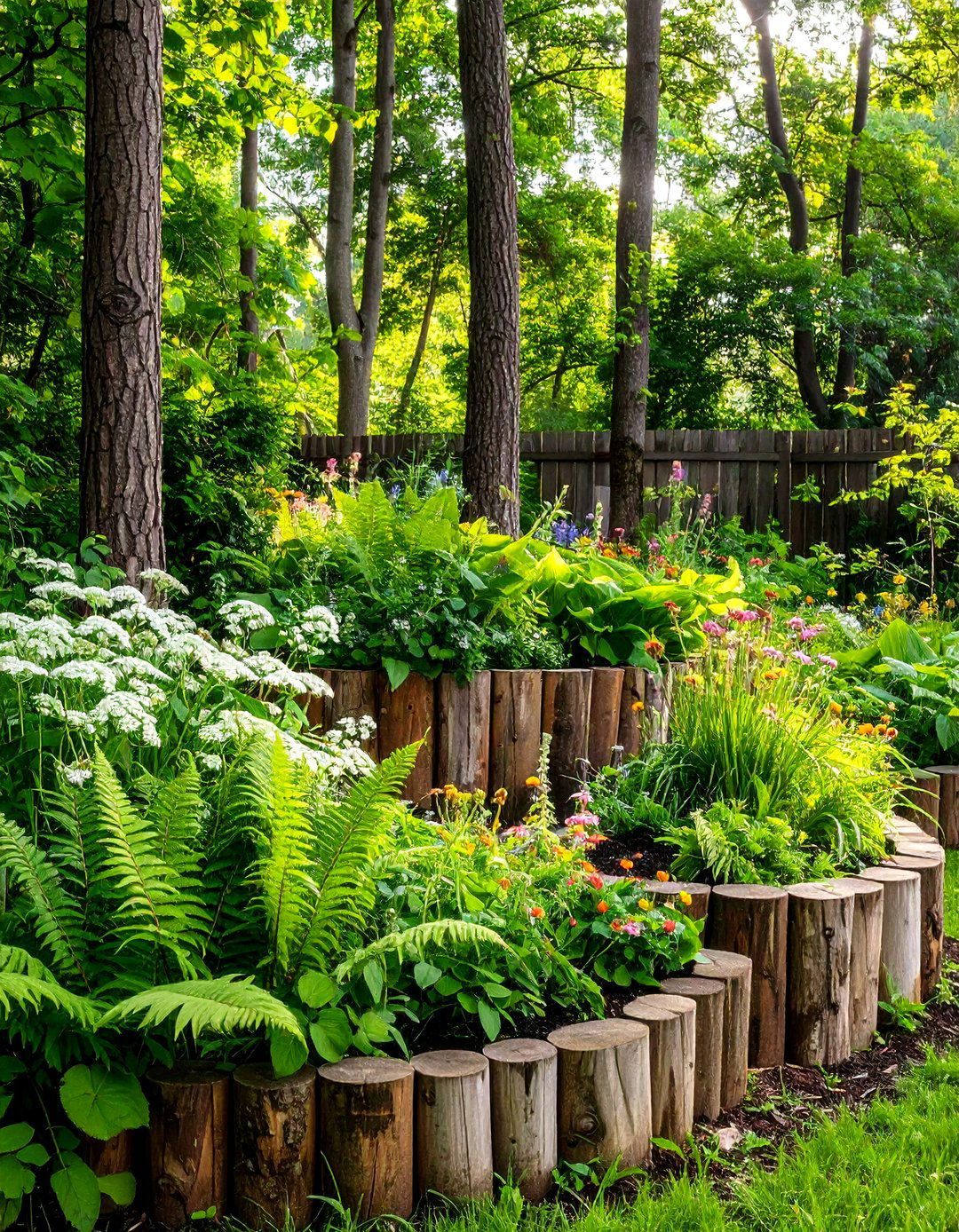
At the transition between woodland and meadow, install tiered raised beds using round logs or rustic timbers. Underplant with shade-tolerant perennials—solomon’s seal, ferns, and bleeding hearts—on lower tiers, and sun-loving wildflowers atop each level. This layered approach mimics forest strata, offering year-round structure and biodiversity.
19. Floating Tiered Planters
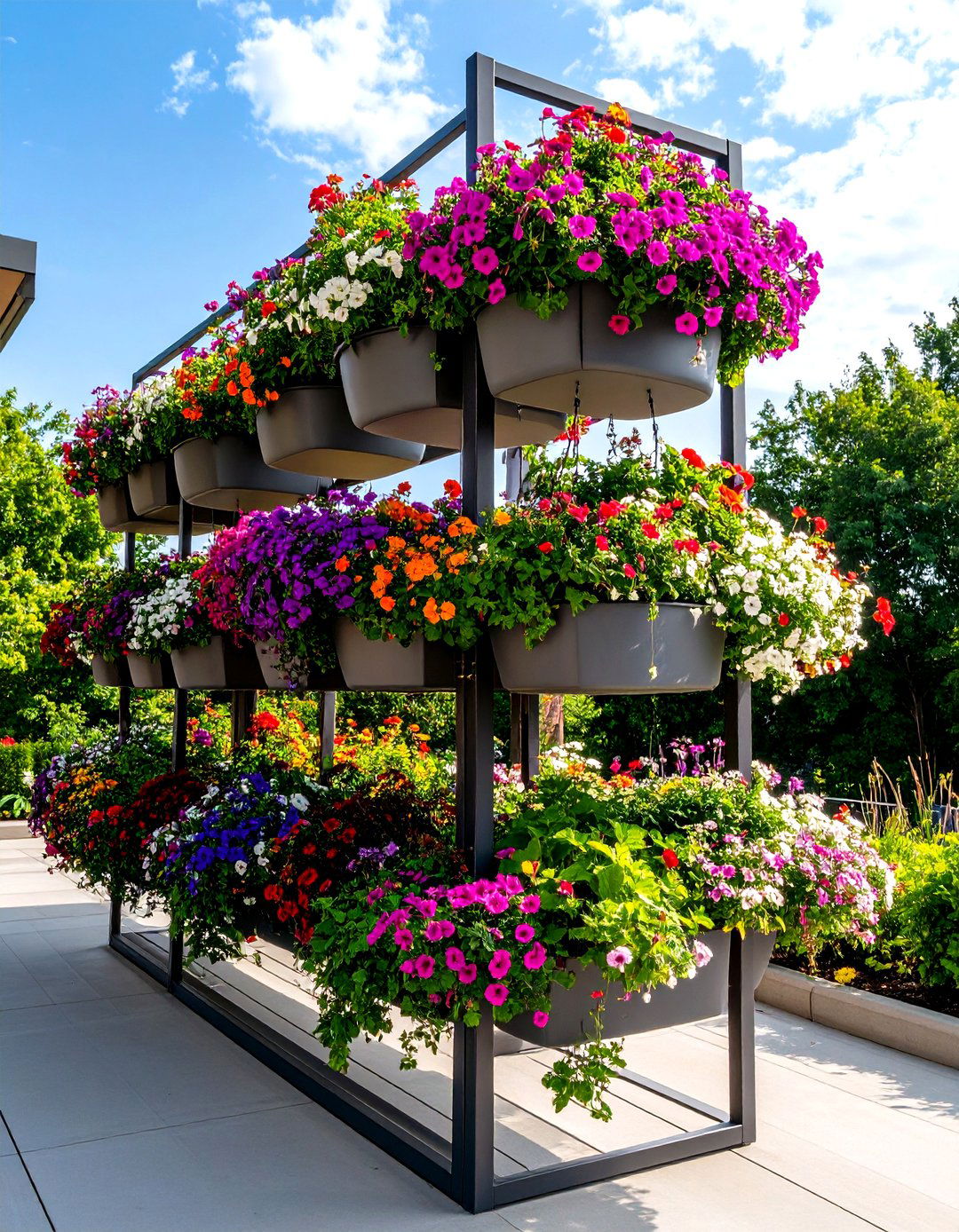
Attach modular planter modules to a horizontal metal frame, creating floating tiers that can be reconfigured like shelving. Ideal for patios or pergolas, these planters slide into rails or hooks, allowing you to adjust tier heights and positions. Use bright annuals for seasonal appeal or perennial herbs for a living green wall effect.
20. Pergola-Integrated Tiers
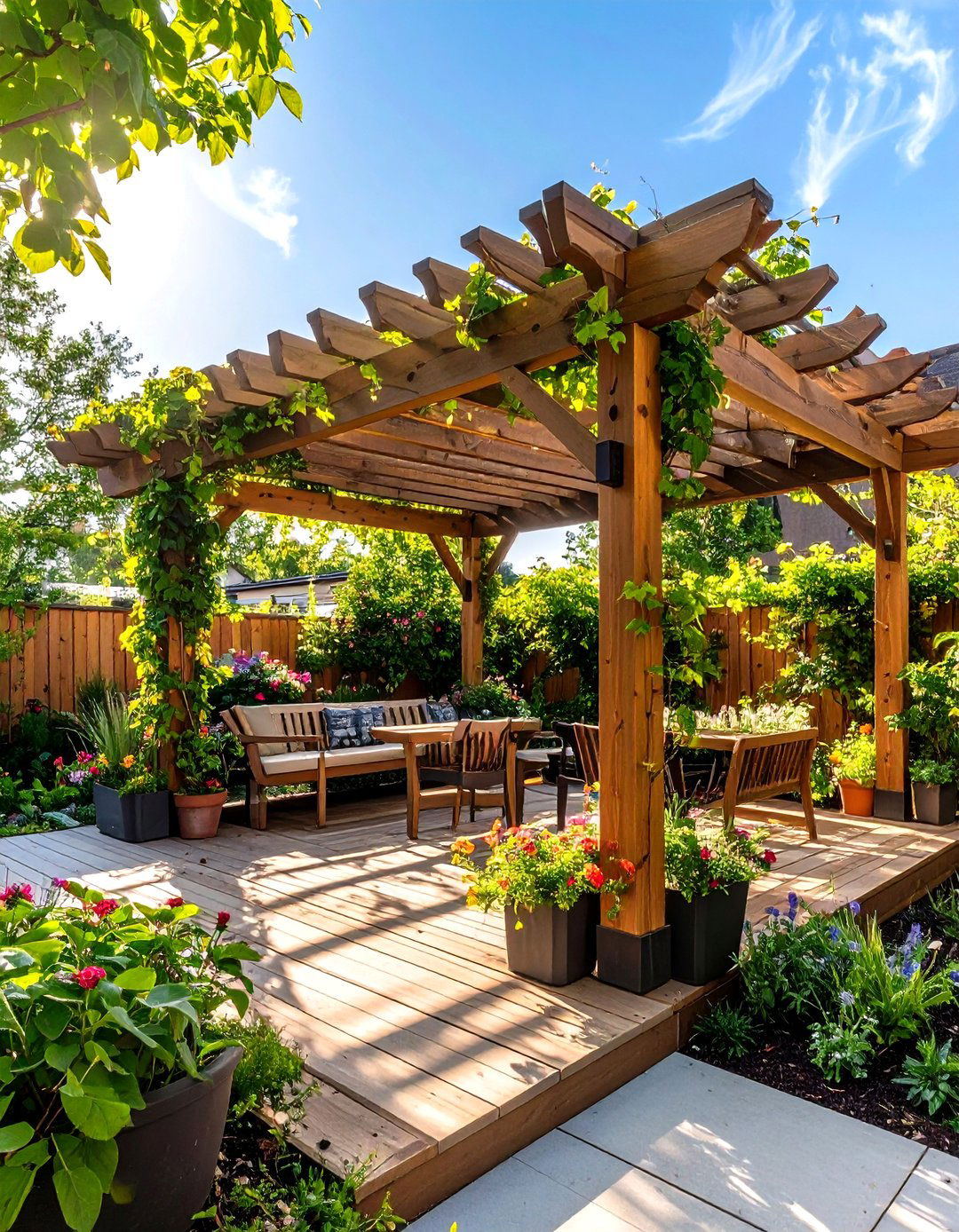
Combine a pergola with tiered benches or broad steps beneath it to form a shaded, multi-level garden lounge. Place potted plants on each level—ferns and hostas in shade-tolerant lower niches, climbers like jasmine entwining overhead—and add cushions for seating. The pergola provides dappled light, perfect for ferns and moisture-loving plants, while structural tiers offer both display and relaxation areas.
Conclusion:
Tiered gardens offer versatile solutions for challenging landscapes, small spaces, and aesthetic ambitions. By choosing structures—whether natural stone, timber, or recycled materials—that suit your site, you can create layered plantings that improve drainage, ease maintenance, and showcase a wide variety of plants. From edible spirals to woodland terraces, each concept enhances both function and form, allowing gardeners to express creativity while maximizing their outdoor footprint. With thoughtful planning, any yard can become a dynamic, multi-dimensional garden retreat.







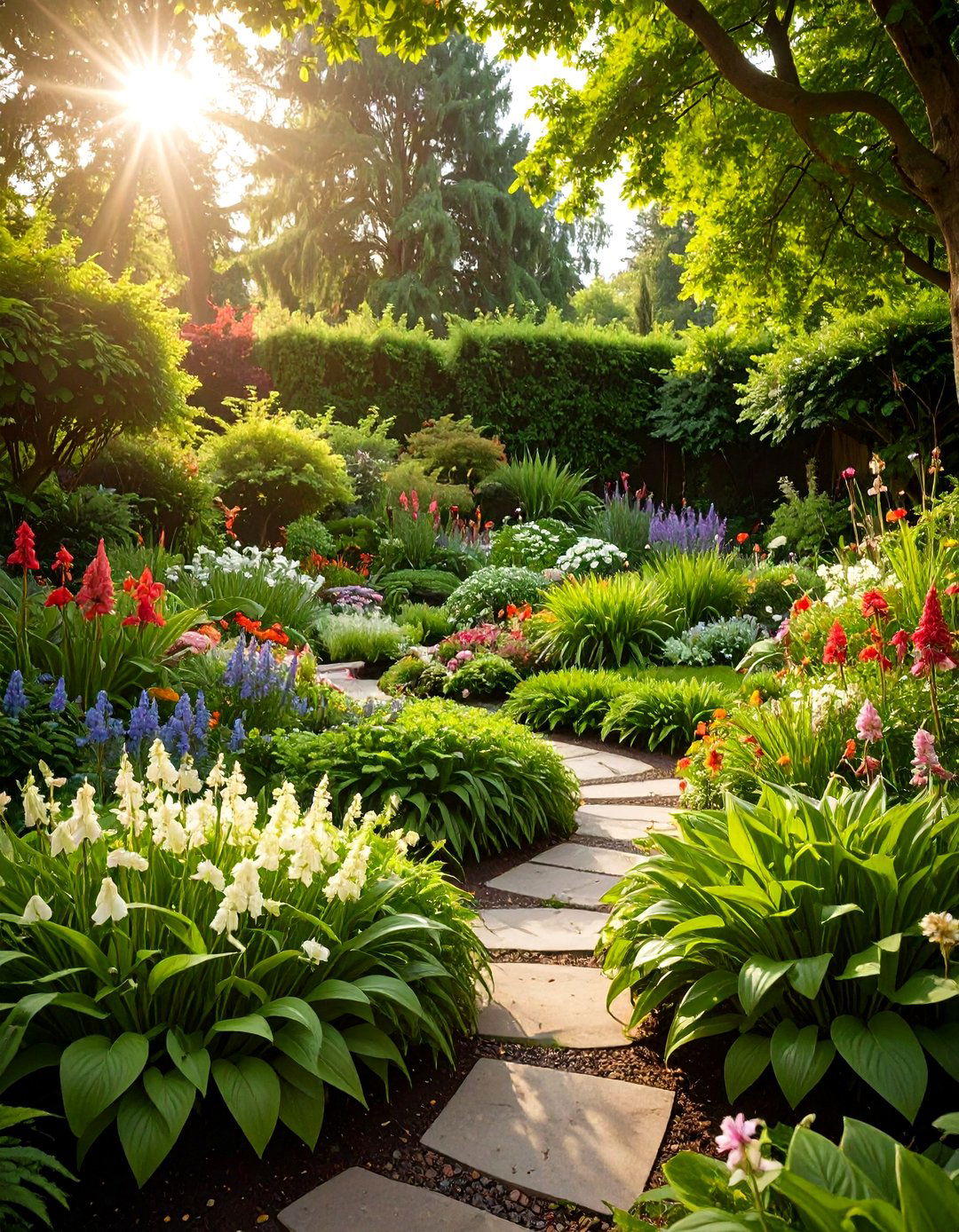
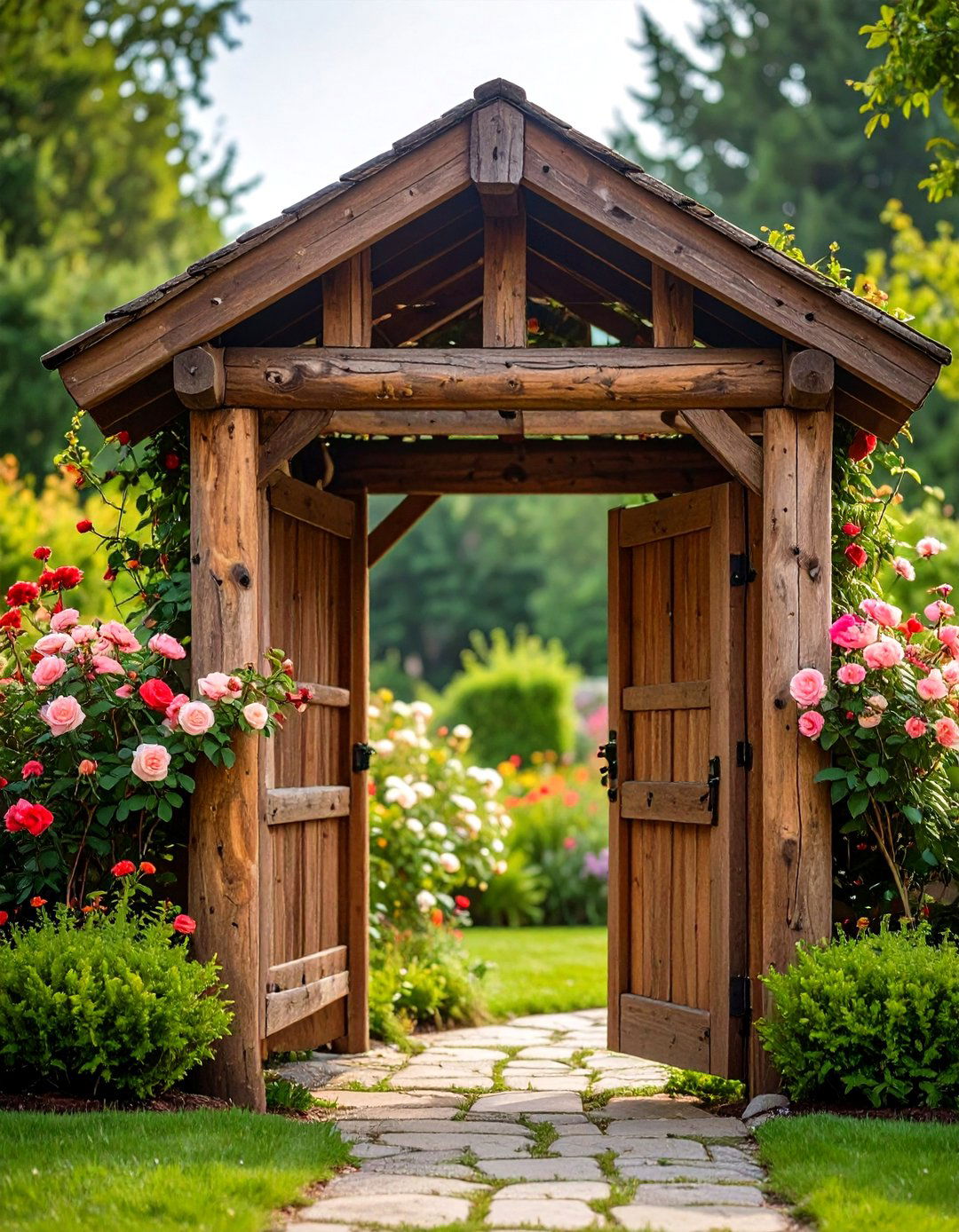
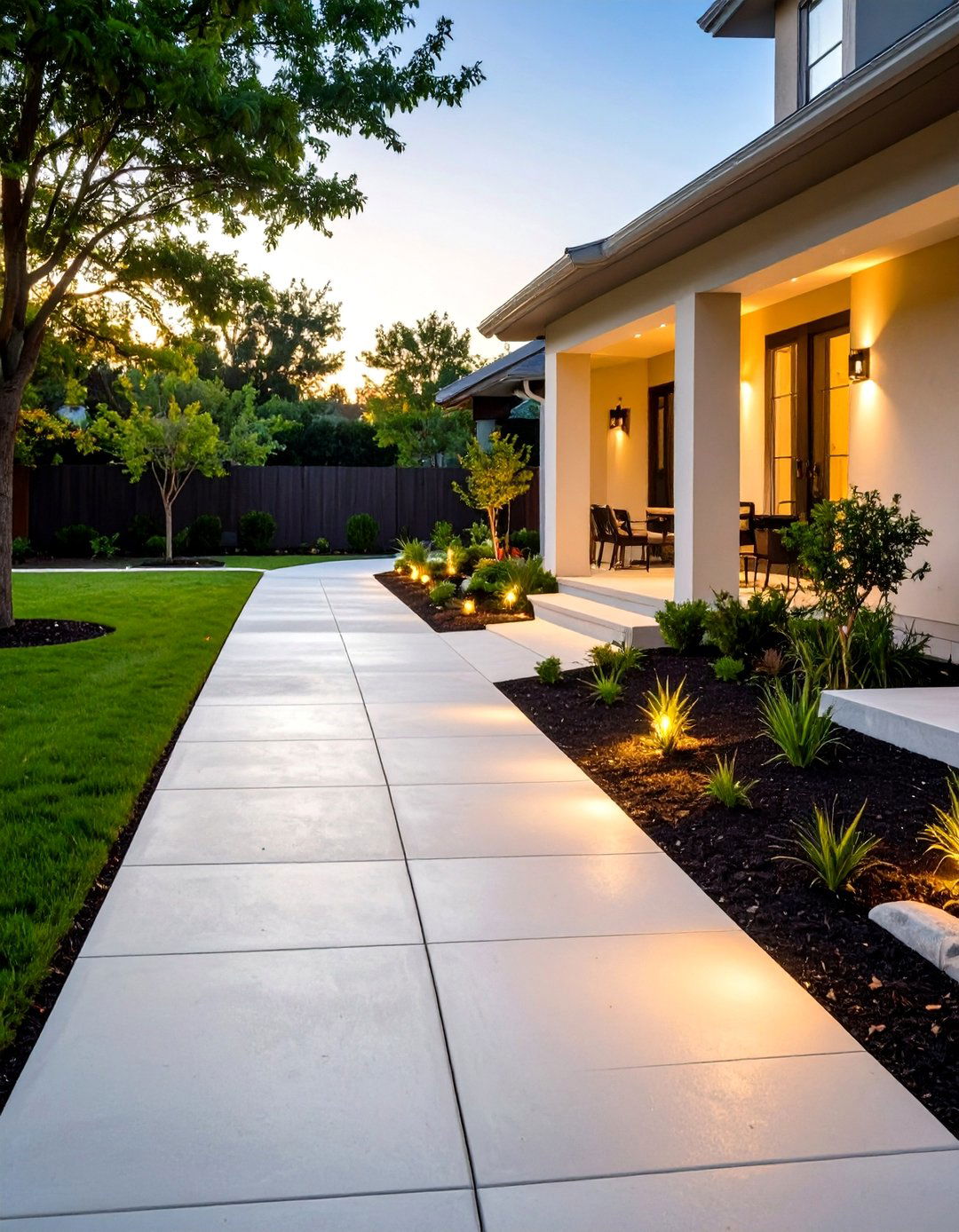
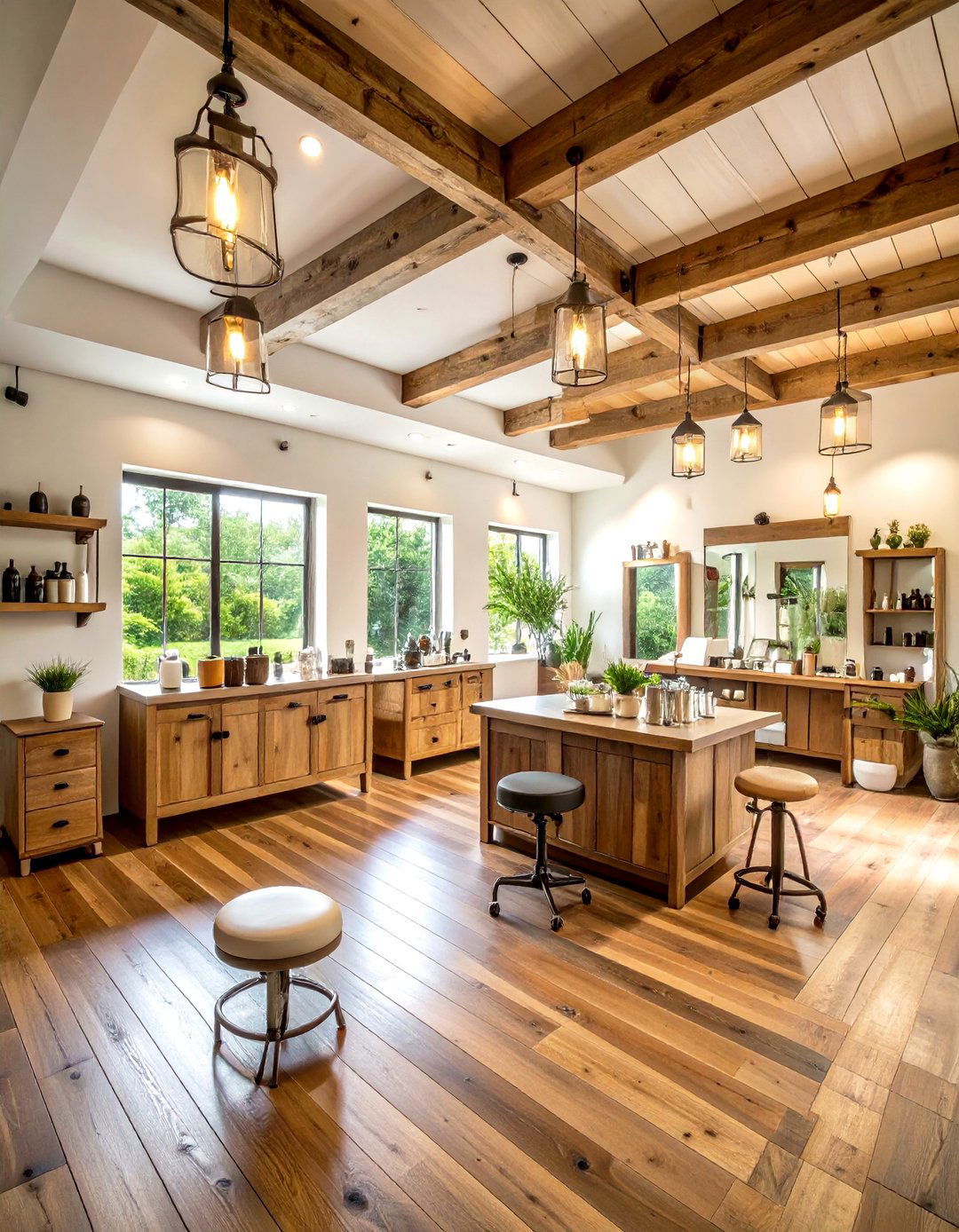


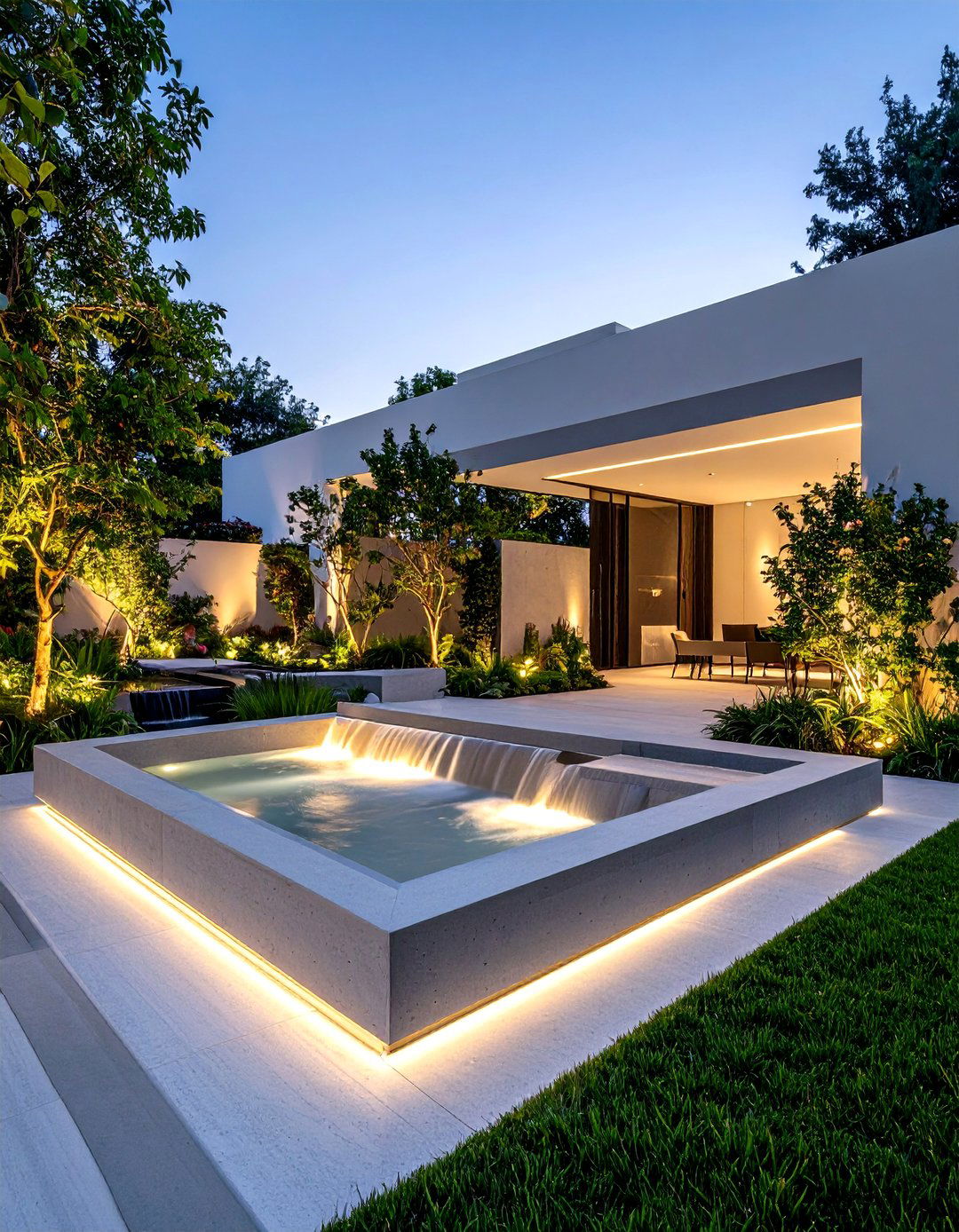
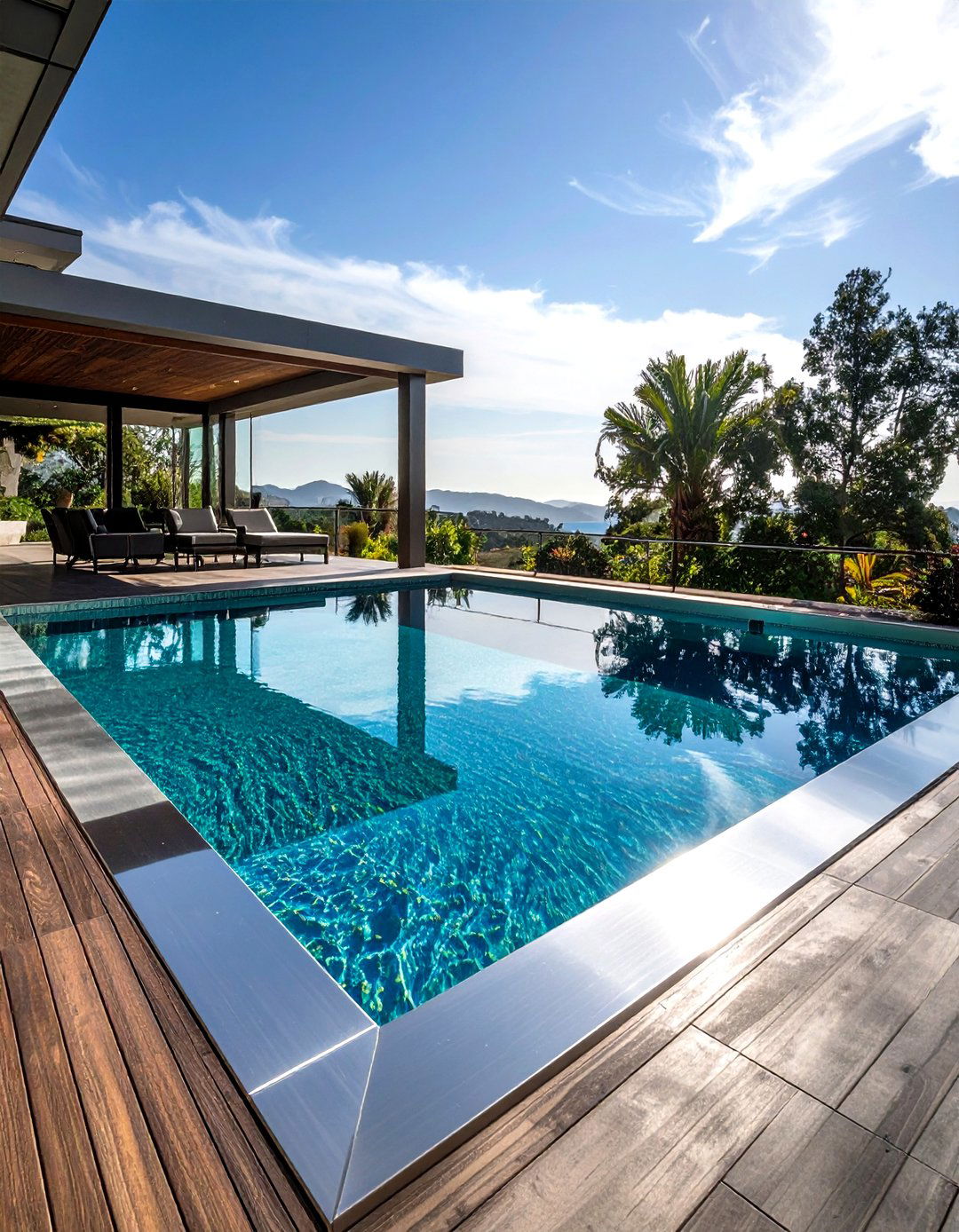
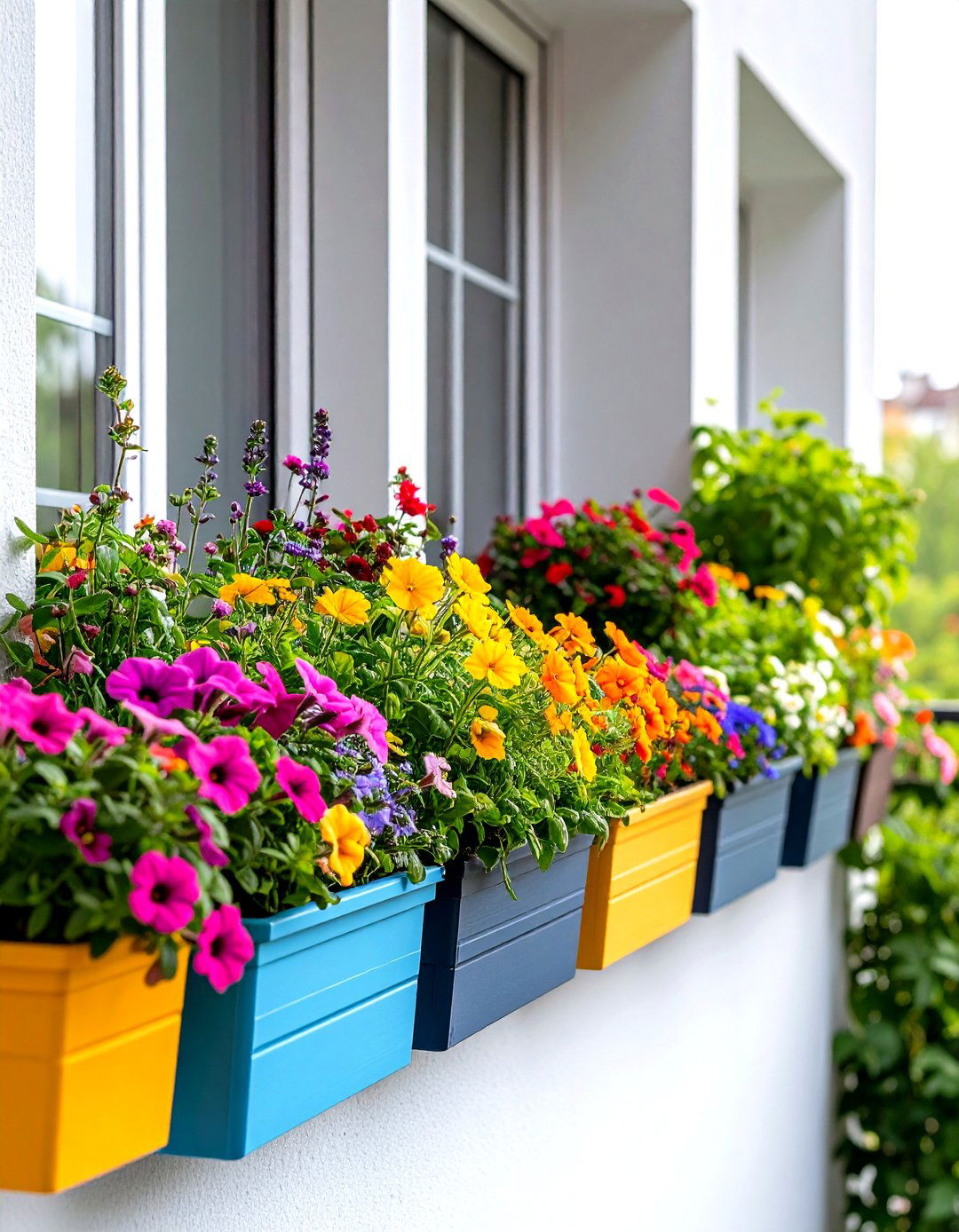
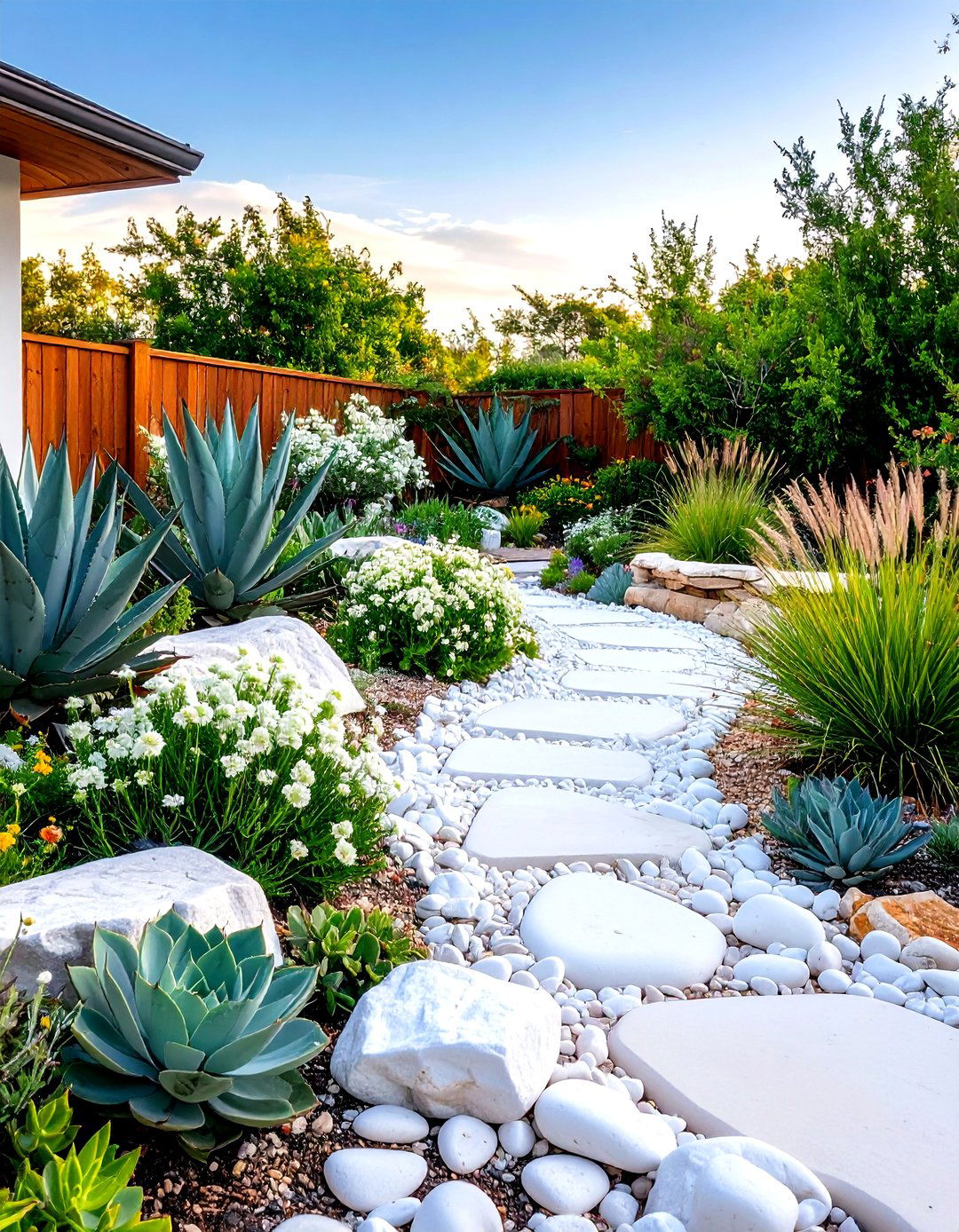
Leave a Reply